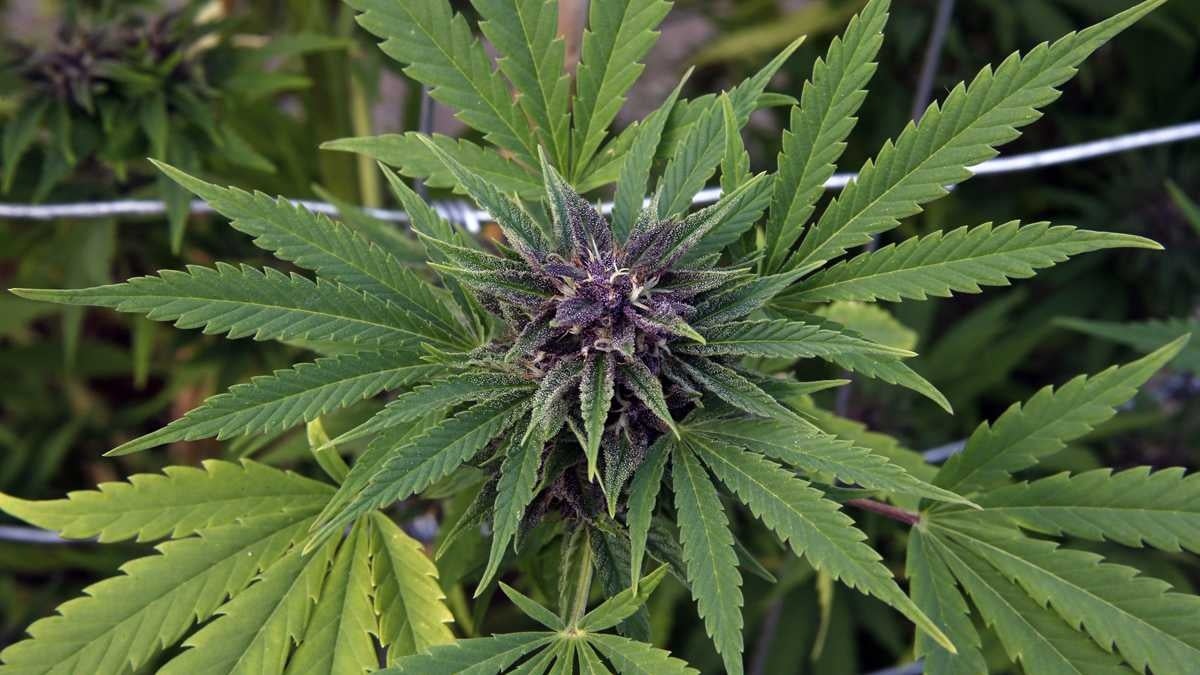Is it possible to legalize marijuana, without promoting its use?
Listen
(Brennan Linsley/AP Photo)
Like alcohol prohibition before it, marijuana prohibition has been a failure. But will hawking the product compound the problem?
In 1934, a spokesman for the American alcohol industry estimated that it had the capacity to produce eight to ten times as much liquor as people were consuming. Although national prohibition had ended the year before, Americans still weren’t drinking enough.
So the industry would need to stoke demand, via advertising. By late 1935, 20 percent of display ads in The New York Times were devoted to wine and spirits. To normalize a product that was still associated with deviance and criminality, the ads often depicted well-heeled people drinking “at swank bars and hotels,” as one 1935 whiskey ad frankly declared.
Is that what we want for marijuana? Like a majority of Americans, I think marijuana should be legal. But I also think we should try to minimize—not promote—its use. There’s strong evidence that heavy marijuana smoking can harm brain development—especially in the young—and can lead to forms of dependency and addiction.
So I’m troubled by the explosion of marijuana advertising around the country. Twenty states and the District of Columbia now allow the medical use of marijuana; most recently, Colorado and Washington legalized it for recreational purposes, too. That’s brought more and more “gangapreneurs”—and their advertisements—into the game.
True, Colorado has barred marijuana ads from billboards and from media where more than 30 percent of users are “expected to be under 21.” But that leaves plenty of other opportunities for pot vendors to hawk their wares—and for other industries to capitalize on the same.
Consider Spirit Airlines, which posted a pot-themed advertisement on its website shortly after the Colorado law went into effect. “The no smoking sign is off,” the ad read. “Get Mile High with $10 off your next flight.”
Meanwhile, a Washington-based digital marketing firm is already selling domain names like “BudWatcher.com” to marijuana companies. “People see it as a business opportunity, and they want to get involved early,” said the founder of the marketing firm, THC Media Group, in a recent interview. “The companies who have responsible branding and advertising are the ones who will ultimately succeed.”
That’s precisely what happened after alcohol prohibition, when firms like Seagram and Schenely—which had profitted handsomely from the bootlegging trade—sought to burnish their image as “responsible” businesses. So they took to the pages of magazines like Time and Life, which was running over 300 liquor ads per year by the 1940s.
As in the 1930s, some of these ads glorified alcohol as a lifestyle accessory of the rich and famous. More commonly, though, they tried to depict it something that any American could—and should—enjoy.
So during World War Two, when beer was sold at military canteens, companies pitched ads at soldiers. According to one industry representative, army canteens were “a chance for brewers to cultivate a taste for beer in millions of young men who will eventually constitute the largest beer-consuming section of our population.” Advertisers also targeted the growing legions of women who—like the mythical “Rosie the Riveter”—worked in munition factories.
In the 1950s, as millions of young Americans started families, Pabst’s “Picnic Values” campaign promoted beer alongside cheese, hot dogs, and pork and beans. Beer advertisers also rode the wave of patriotic fervor that swept the country during these Cold War years. “In this friendly, freedom-loving land of ours—Beer belongs,” a U.S. Brewers Foundation ad declared. “Enjoy it!”
And in the 1960s, when taboos on sexual expression started to melt away, alcohol advertisers happily capitalized on the new heat. “Liquor belongs in romance,” an advertising analyst wrote, summarizing the most popular alcohol pitches. “A tavern is a good place to make love.”
Since then, the alcohol industry has tried to make drinking look fun, sexy, and seductive. Some spokesmen have claimed that advertising doesn’t create new consumers; instead, it simply encourages people who already drink to switch brands. But history—and logic—suggest otherwise. “We’ve got to persuade more people to drink whiskey,” one distiller admitted in 1977.
The pot companies will create lots of new consumers, too, unless we restrict their own advertising. And I’m not the only one who thinks so. In a survey conducted last year by the Partnership for a Drug Free America, which confirmed Americans’ overall support for marijuana legalization, 80 percent of respondents also said that pot businesses should be barred from advertising.
They’re right. Like alcohol prohibition before it, marijuana prohibition has been a failure. But we’ll compound the damage if we simply let everyone hawk the product, which will inevitably lure more people into using it. We tried that once, with alcohol. And it’s not a history we should care to repeat.
Jonathan Zimmerman is a professor of history and education at New York University. He is the author of “Distilling Democracy: Alcohol Education in America’s Public Schools, 1880-1925” (University of Kansas Press).
WHYY is your source for fact-based, in-depth journalism and information. As a nonprofit organization, we rely on financial support from readers like you. Please give today.

